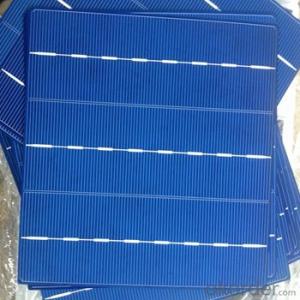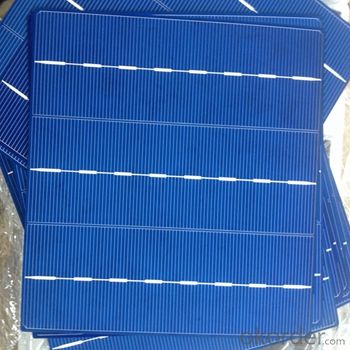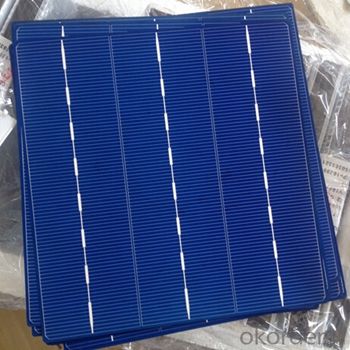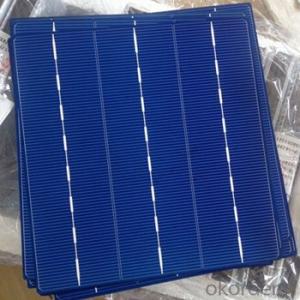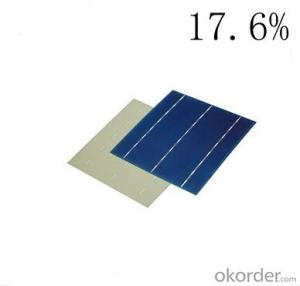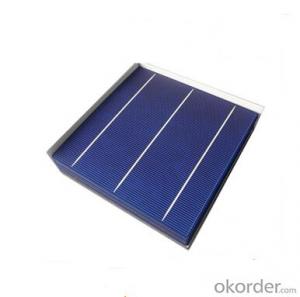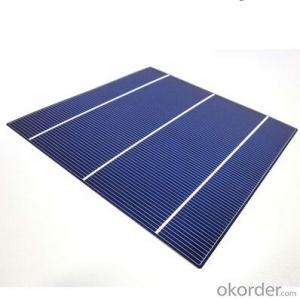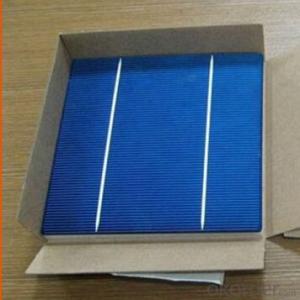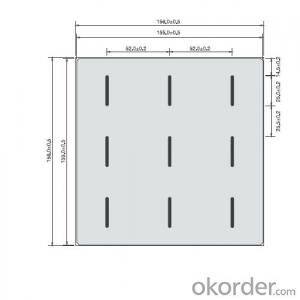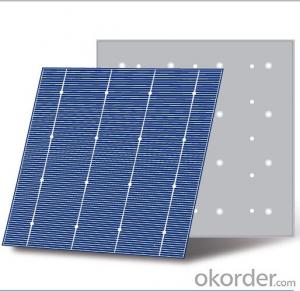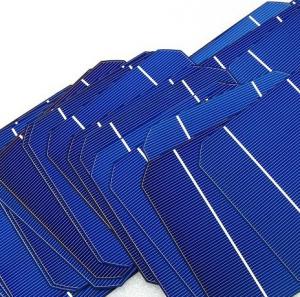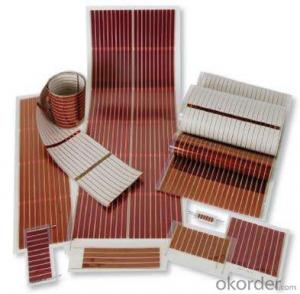Highest Efficiency Polycrystalline Solar Cells with Stable Performance
- Loading Port:
- Shanghai
- Payment Terms:
- TT or LC
- Min Order Qty:
- 5000 pc
- Supply Capability:
- 9000000 pc/month
OKorder Service Pledge
OKorder Financial Service
You Might Also Like
Polycrystalline Silicon Solar Cells:
Solar cells is made by solar wafer, it has three categories of solar cell right now, monocrystalline polycrystalline and thin film,These cells are entirely based around the concept of ap-n junction, which is the critical part of solar module, it is the part that can convert the light energy into electricity, the thickness is from 180um to 200um, with even busbars to conduct electricity, textured cell can decrease diffuse reflection; they are often electrically connected and encapsulated as a module. Photovoltaic modules often have a sheet of glass on the front (sun up) side, allowing light to pass while protecting semiconductor wafers from abrasion and impact due to wind-driven debris, rain, hail, etc. Solar cells are also usually connected in series in modules, creating an additive voltage. Connecting cells in parallel will yield a higher current;With high quality and stable quality. Our Cells can greatly improve the performance of Solar Modules.
Polycrystalline Silicon Solar Cells Advantage:
• High efficiency and stable performance in photovoltaic conversion.
• Advanced diffusion technique ensuring the homogeneity of energy conversion efficiency of the cell.
• Advanced PECVD film forming, providing a dark blue silicon nitride anti-reflection film of homogenous color and attractive appearance.
• High quality metal paste for back surface and electrode, ensuring good conductivity, high pulling strength and ease of soldering.
• High precision patterning using screen printing, ensuring accurate busbar location for ease with automatic soldering a laser cutting.
Specification:
Mechanical data and design |
Format - 156 mm × 156 mm ± 0.5 mm |
Thickness- - 200 μm ± 20 μm |
Front (-) - 1.4 mm bus bars (silver),blue anti-reflection coating (silicon nitride) |
Back (+) - 2 mm wide soldering pads (silver) back surface field (aluminium) |
Temperature Coefficient of Cells |
Voc. Temp .coef.%/K -0.364%/K |
Isc . Temp .coef.%/K +0.077%/K |
Pm. Temp. coef.%/K -0.368%/K |
Electrical Characteristic |
Efficiency (%) Pmpp (W) Umpp (V) Impp (A) Voc (V) Isc (A) |
18.00% 4.380 0.538 8.141 0.634 8.740 |
17.90% 4.356 0.538 8.097 0.634 8.725 |
17.80% 4.331 0.537 8.065 0.633 8.710 |
17.70% 4.307 0.536 8.035 0.632 8.695 |
17.60% 4.283 0.535 8.006 0.631 8.680 |
17.50% 4.258 0.534 7.974 0.630 8.665 |
17.40% 4.234 0.533 7.944 0.629 8.650 |
17.30% 4.210 0.532 7.914 0.628 8.635 |
17.20% 4.185 0.531 7.88 -- 0.627 -- 8.620 |
17.10% 4.161 0.530 7.851 0.626 8.605 |
17.00% 4.137 0.529 7.820 0.625 8.590 |
Intensity Dependence |
Intensity [W/m2] Isc× [mA] Voc× [mV] Pmpp |
1000 1.00 1.000 1.00 |
900 0.90 1.000 0.90 |
800 0.80 0.99 0.80 |
500 0.50 0.96 0.49 |
300 0.30 0.93 0.29 |
200 0.20 0.92 0.19 |
IV Curve

Solar Panel Images:
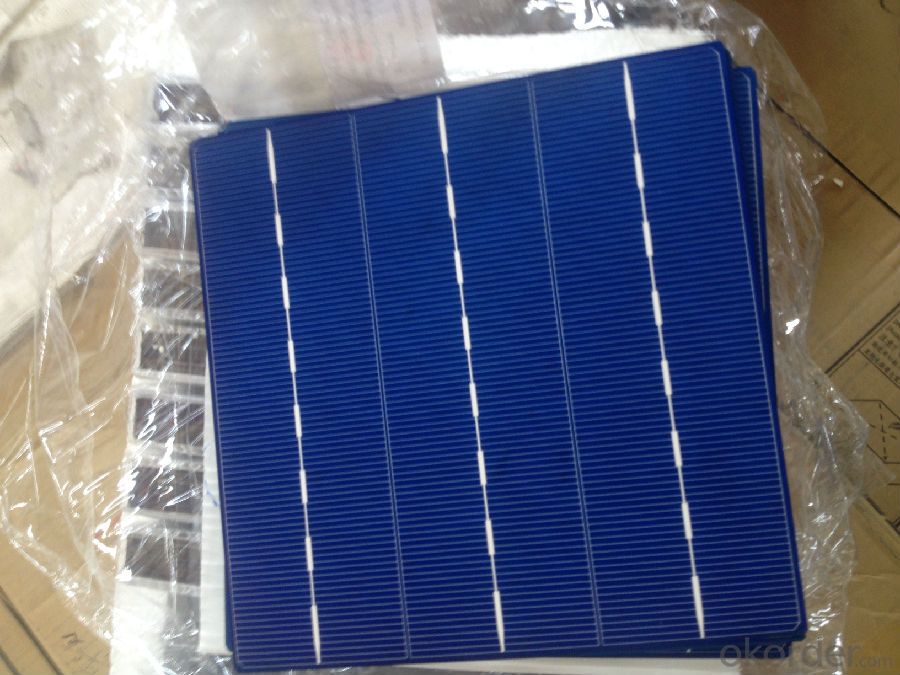

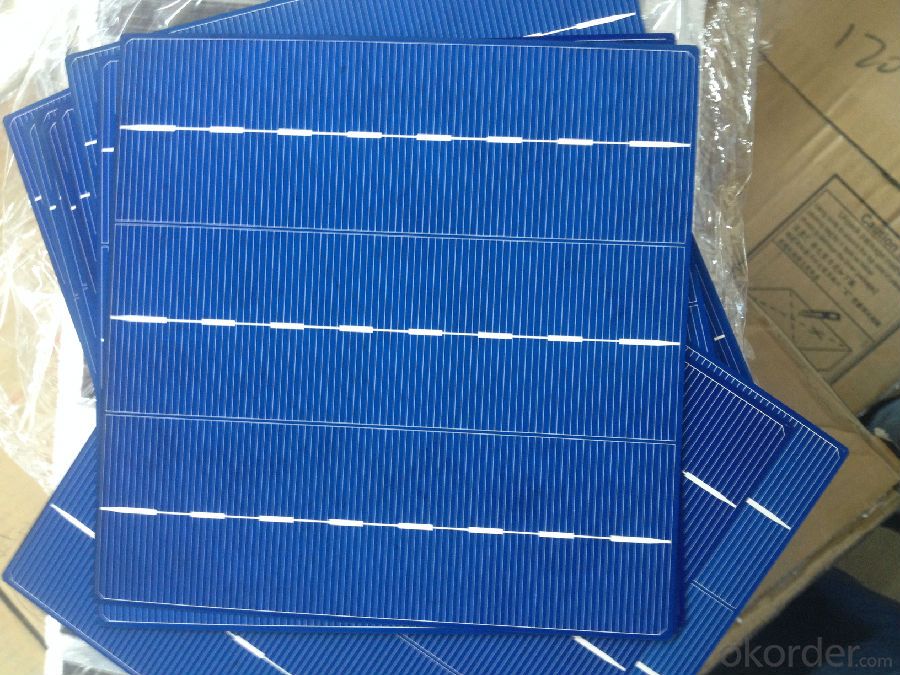
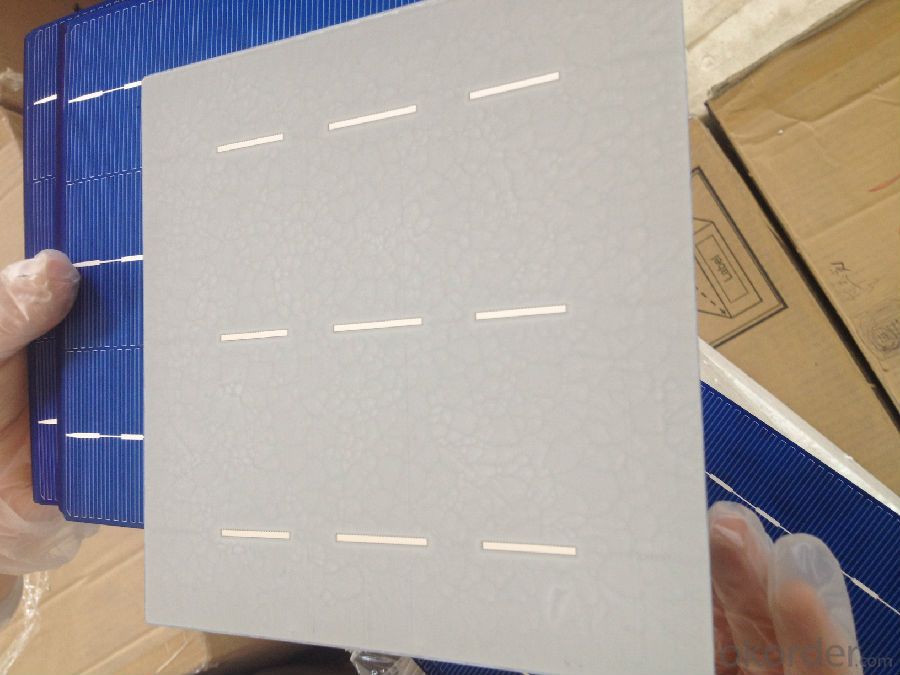

FAQ
We have organized several common questions for our clients,may help you sincerely:
①What price for each watt?
It depends on the efficiency of the solar cell, quantity, delivery date and payment terms.
②How long can we receive the product after purchase?
In the purchase of product within three working days, We will arrange the factory delivery as soon as possible. The pecific time of receiving is related to the state and position of customers.Commonly 7 to 10 working days can be served.
③Can you provide the peripheral products of the solar panels, such as the battery, controller, and inverter? If so, can you tell me how do they match each other?
Yes, we can, we have two companies for solar region, one is CNBM International, the other is CNBM engineering Co.
We can provide you not only the solar module but also the off grid solar system, we can also provide you service with on grid plant.
④What is your warranty of solar cell?
Our product can promise lower than 0.3% open box crack, we support claim after opening the box if it has crackm color difference or sth, the buyer should give pictures immediately, we can not accept the claim after the solar cell has assembled to solar panel.
• Timeliness of delivery
• ⑤How do you pack your products?
We have rich experience on how to pack the solar cell to make sure the safety on shipment, we could use wooden box or pallet as buyer's preference.
⑥ Can you do OEM for us?
Yes, we can.
New Achievement of Chinese solar cell research
Professor Xiong Yujie group from China Science and Technology University have designed a photoelectric conversion can be carried out and has a flexible solar cell mechanics in the near infrared region based on the widely used semiconductor silicon material, the use of hot electron injection method of metallic nanostructures. Most solar cells are for visible light absorption, accounting for 52% of the sunlight near-infrared light has not been used efficiently. To solve this problem, based on previous research group Xiong Yujie semiconductor - metal interface, creatively having a near-infrared light absorption properties of silver nano-chip with integrated silicon nanowires to build two different photovoltaic devices, the near infrared region photoelectric conversion characteristics are improved. In the near-infrared light, the silver nano-chip generated hot electrons can be injected directly into the silicon semiconductor, the band of the photoelectric conversion.
In addition, conventional solar cells must be processed into hard plate-like objects, which limit daily use. Lightweight and flexible devices, and can be folded, crimped, pasted on a surface, such as automotive glass, roof, clothes. Xiong Yujie group of commercial silicon nano process combined with silver nano-sheet near-infrared light absorption properties, to create a near-infrared solar cell having mechanical flexibility.
Experts said the work by nano-manufacturing and nano-synthesis two kinds of nano effective combination of technologies to achieve a broad spectrum of the light-absorbing composite structures design and the development of a simple and effective near-infrared flexible solar cell manufacturing method is expected to for the development of smart thermostat and wearable solar cells solar cells.
- Q: What is the role of power optimizers in solar cell systems?
- Power optimizers play a crucial role in solar cell systems by maximizing the energy output of each individual solar panel. They work by individually monitoring and optimizing the performance of each panel, thereby minimizing power losses caused by shading, mismatch, and other factors. This optimization helps to improve the overall efficiency and reliability of the solar system, ensuring that it operates at its highest potential and delivers maximum energy yields.
- Q: Can solar cells be used for indoor applications?
- Yes, solar cells can be used for indoor applications. While they are primarily designed for outdoor use to harness sunlight, advancements in technology have made it possible to use solar cells indoors as well. Indoor solar cells can be used to power various devices and systems, such as indoor lighting, small electronics, and even indoor farming setups. Additionally, solar cells can also be used in combination with battery storage to provide a continuous and renewable power source for indoor applications.
- Q: What is the impact of maintenance and cleaning on solar cell performance?
- Maintenance and cleaning play a crucial role in maintaining optimal solar cell performance. Regular maintenance, such as inspecting and repairing any damages, ensures that the cells are functioning efficiently and effectively. Additionally, cleaning the solar panels helps remove any dirt, dust, or debris that can accumulate and hinder sunlight absorption. By keeping the panels clean and well-maintained, solar cell performance is maximized, resulting in higher energy production and increased overall efficiency.
- Q: What is the impact of shading on solar cell performance?
- Shading has a significant negative impact on solar cell performance. When a solar cell is partially shaded, it reduces the amount of sunlight reaching the shaded area, leading to a decrease in power generation. This is because shading disrupts the flow of electrical current within the solar cell, resulting in reduced efficiency and overall output. Even a small amount of shading, such as from trees, buildings, or debris, can have a noticeable impact on the performance of the solar cell. Therefore, it is important to carefully consider the placement and positioning of solar panels to avoid shading and maximize their efficiency.
- Q: Can solar cells be used in commercial buildings?
- Yes, solar cells can be used in commercial buildings. They are increasingly being installed on rooftops and facades of commercial buildings to generate clean and renewable energy. Solar cells help reduce electricity costs and reliance on the grid while also contributing to the overall sustainability and environmental footprint of commercial buildings.
- Q: Can solar cells be used to power electronic devices?
- Yes, solar cells can be used to power electronic devices. Solar cells convert sunlight into electricity, which can then be used to power a wide range of electronic devices such as smartphones, laptops, calculators, and even larger appliances like refrigerators or streetlights. This allows for a sustainable and renewable source of energy for various applications.
- Q: Can solar cells be used for desalination purposes?
- Yes, solar cells can be used for desalination purposes. Solar-powered desalination systems, such as reverse osmosis (RO) or solar stills, can convert saltwater into freshwater by utilizing the energy from sunlight to power the desalination process. This renewable energy source makes desalination more sustainable and environmentally friendly.
- Q: How do solar cells affect the aesthetics of a building?
- Solar cells can have both positive and negative impacts on the aesthetics of a building. On one hand, solar cells can be integrated into the design of a building in a way that enhances its visual appeal. They can be sleek and modern, adding a contemporary touch to the structure. Additionally, solar panels can be installed on flat roofs or as part of shading devices, blending seamlessly with the overall architecture. However, solar cells can also be seen as an eyesore, especially if they are installed in an unattractive or haphazard manner. The presence of bulky panels on the roof or facade of a building may be considered visually disruptive and can detract from the building's overall aesthetics. In summary, the impact of solar cells on a building's aesthetics depends on their design, placement, and integration. With thoughtful planning and execution, solar cells can actually enhance the visual appeal of a building, but careless installation may have the opposite effect.
- Q: How can I buy the solar cells wholesale ?
- There are many OEM factories manufacturing solar cells in China. As long as your order is big enough, most of the OEM factories are willing to provide you a competitive whole sale price which is much cheaper than retail price.
- Q: How does a solar cell raise industrial efficiency?
- By providing more power and using less energy.
Send your message to us
Highest Efficiency Polycrystalline Solar Cells with Stable Performance
- Loading Port:
- Shanghai
- Payment Terms:
- TT or LC
- Min Order Qty:
- 5000 pc
- Supply Capability:
- 9000000 pc/month
OKorder Service Pledge
OKorder Financial Service
Similar products
Hot products
Hot Searches
Related keywords
